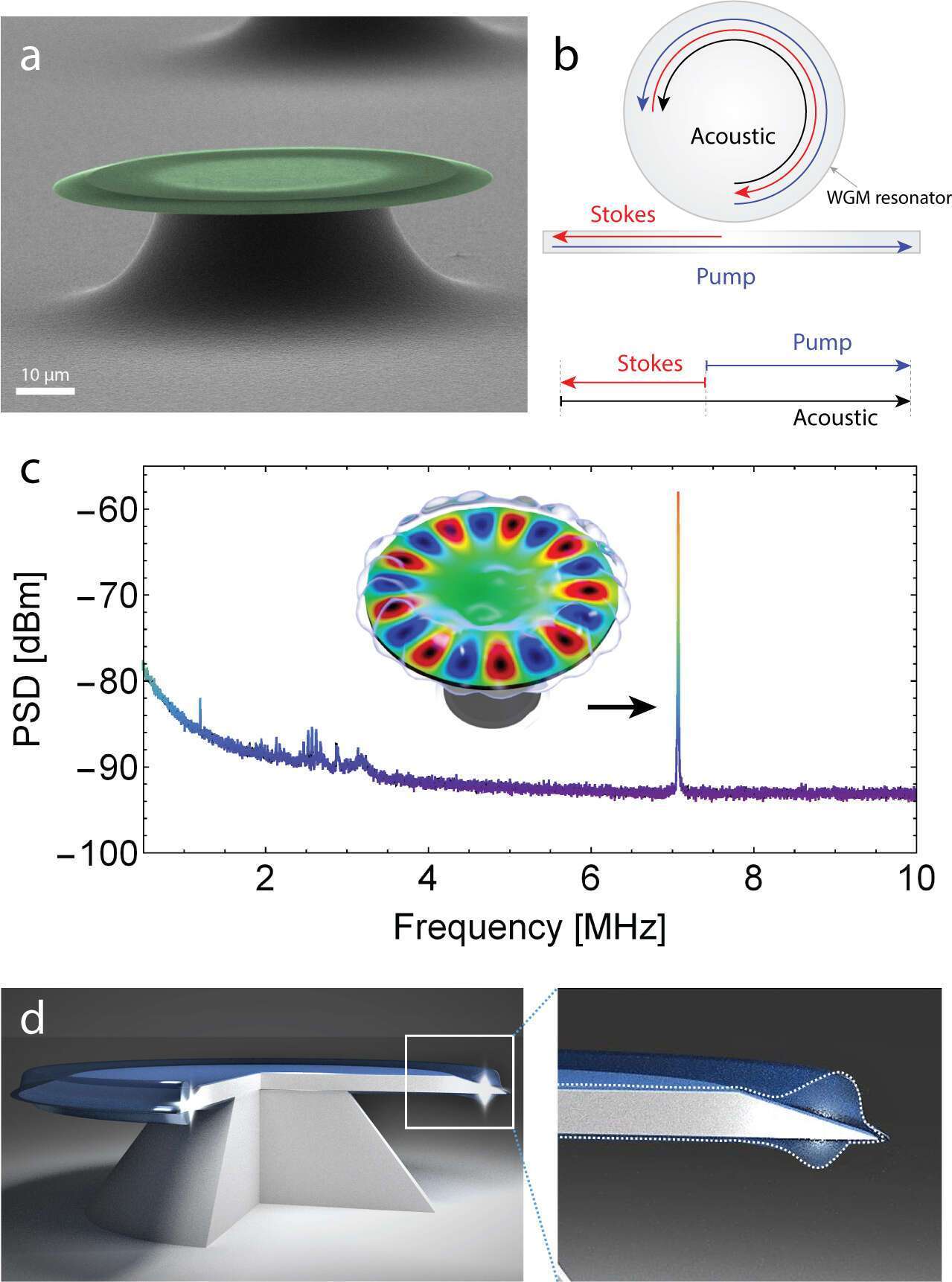
Brillouin Lasing in Films of Superfluid Helium
The ultra-compliant nature of superfluid helium films is leveraged to observe low threshold Brillouin lasing.
The Brillouin process is widely regarded as an extremely useful tool for applications ranging from ultra-narrow linewidth on-chip lasers and inertial sensors, to reconfigurable narrowband notch filters and non-reciprocal photonic components.
Enabled by superfluid helium’s ultra-low viscosity, we propose and experimentally demonstrate a novel kind of Brillouin laser based on thickness perturbations of superfluid helium films. Our experimental setup consists of an evanescently coupled silica microresonator (see Fig. (a)) covered by a nanometer-thick superfluid 4He film. Due to optical radiation pressure forces the superfluid is drawn towards regions of high light intensity inside the resonator, see Fig. (d). This results in a spatially modulated film thickness that forms a refractive index grating, which subsequently leads to spontaneous Brillouin scattering and low threshold lasing.
In contrast to the commonly studied Brillouin scattering in solids, this superfluid based approach provides access to substantially larger Brillouin gain. This dramatic enhancement can be intuited by comparing the difficulty in straining solid materials such as silica, to the ease with which light can deform a superfluid interface. This work brings the high sensitivity of cavity optomechanics to fluid/soft-matter systems, and has applications in terms of on-chip tunable ultra-narrow linewidth lasers, as well as, from a more fundamental perspective, the optical stirring of quantum fluids.

email:g.harris2@uq.edu.au

Powered by Eventact EMS